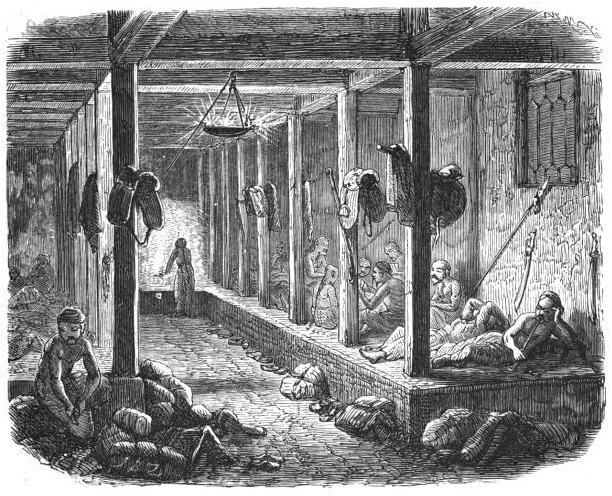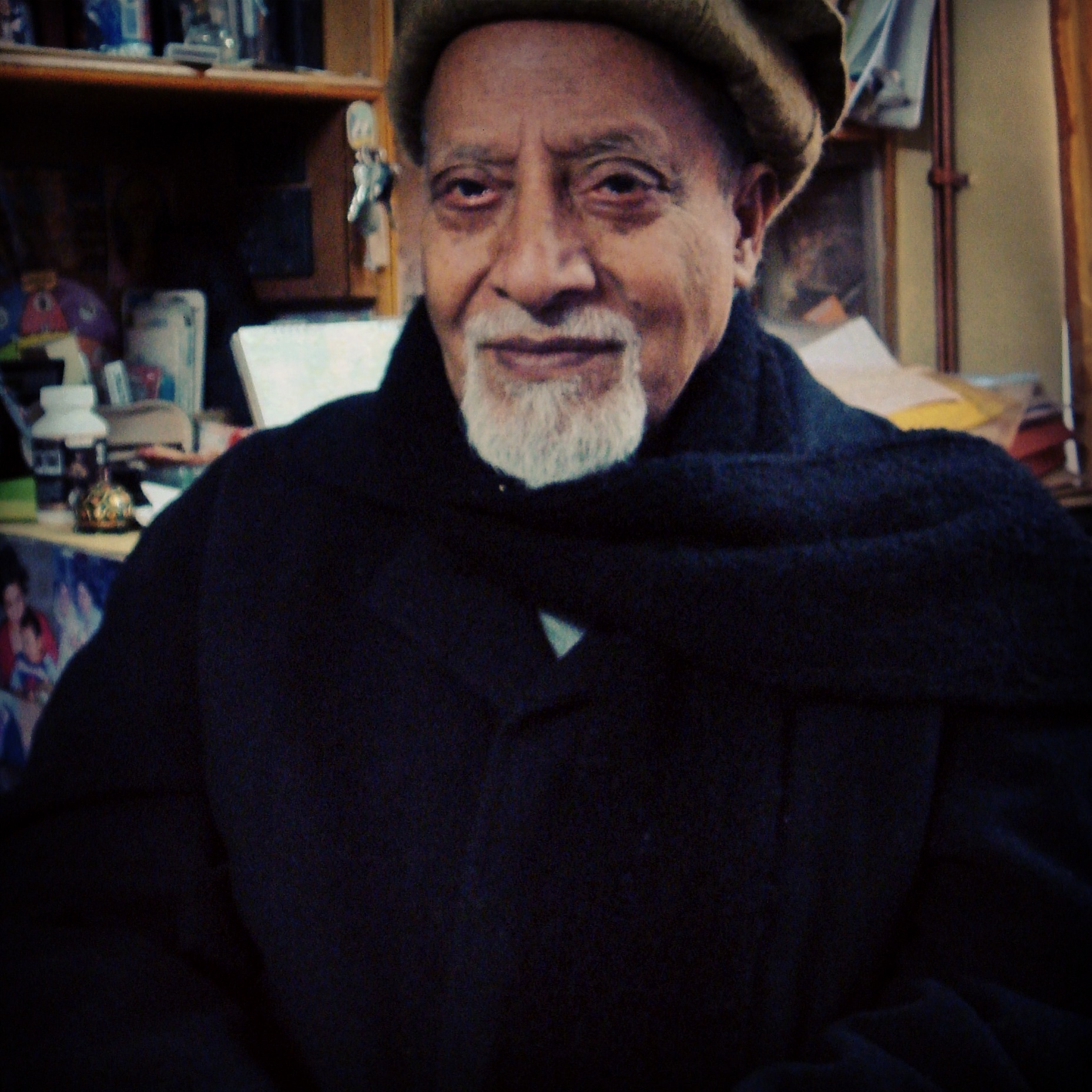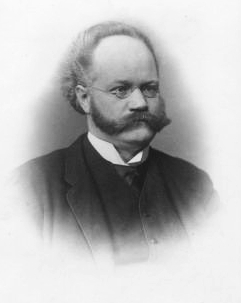|
Life Of Issa
Shulim or Nikolai Aleksandrovich Notovich (russian: Николай Александрович Нотович) (August 13, 1858 – after 1916), known in the West as Nicolas Notovitch, was a Crimean Jewish adventurer who claimed to be a Russian aristocrat, spy and journalist. Notovitch is known for his 1894 book claiming that during the unknown years of Jesus, he left Galilee for India and studied with Buddhists and Hindus before returning to Judea. Notovitch's claim was based on a document he said he had seen at the Hemis Monastery while he stayed there.McGetchin, Douglas T., ''Indology, Indomania, and Orientalism'', Fairleigh Dickinson Univ Press, 2009, . p. 133: "Faced with this cross-examination, Notovich allegedly confessed to fabricating his evidence." The consensus view amongst modern scholars is that Notovitch's account of the travels of Jesus to India was a hoax.''New Testament Apocrypha, Vol. 1: Gospels and Related Writings'' by Wilhelm Schneemelcher and R. Mcl. Wils ... [...More Info...] [...Related Items...] OR: [Wikipedia] [Google] [Baidu] |
Max Müller
Friedrich Max Müller (; 6 December 1823 – 28 October 1900) was a German-born philologist and Orientalist, who lived and studied in Britain for most of his life. He was one of the founders of the western academic disciplines of Indian studies and religious studies ('science of religion', German: ''Religionswissenschaft'').Sara Abraham and Brannon Hancock, doctoral students of theology in University of Glasgo''Friedrich Max Müller'' Gifford Lectures. Müller wrote both scholarly and popular works on the subject of Indology. The ''Sacred Books of the East'', a 50-volume set of English translations, was prepared under his direction. He also promoted the idea of a Turanian family of languages. Early life and education Max Müller was born into a cultured family on 6 December 1823 in Dessau, the son of Wilhelm Müller, a lyric poet whose verse Franz Schubert had set to music in his song-cycles ''Die schöne Müllerin'', and ''Winterreise''. His mother, Adelheid Müller ( ... [...More Info...] [...Related Items...] OR: [Wikipedia] [Google] [Baidu] |
Pali
Pali () is a Middle Indo-Aryan liturgical language native to the Indian subcontinent. It is widely studied because it is the language of the Buddhist ''Pāli Canon'' or ''Tipiṭaka'' as well as the sacred language of ''Theravāda'' Buddhism.Stargardt, Janice. ''Tracing Thoughts Through Things: The Oldest Pali Texts and the Early Buddhist Archaeology of India and Burma.'', Royal Netherlands Academy of Arts and Sciences, 2000, page 25. Early in the language's history, it was written in the Brahmi script. Origin and development Etymology The word 'Pali' is used as a name for the language of the Theravada canon. The word seems to have its origins in commentarial traditions, wherein the (in the sense of the line of original text quoted) was distinguished from the commentary or vernacular translation that followed it in the manuscript. K. R. Norman suggests that its emergence was based on a misunderstanding of the compound , with being interpreted as the name of a particular ... [...More Info...] [...Related Items...] OR: [Wikipedia] [Google] [Baidu] |
Slokas
Shloka or śloka ( sa, श्लोक , from the root , Macdonell, Arthur A., ''A Sanskrit Grammar for Students'', Appendix II, p. 232 (Oxford University Press, 3rd edition, 1927). in a broader sense, according to Monier-Williams's dictionary, is "any verse or stanza; a proverb, saying"; but in particular it refers to the 32-line verse, derived from the Vedic ''anuṣṭubh'' metre, used in the ''Bhagavad Gita'' and many other works of classical Sanskrit literature. In its usual form it consists of four ''pādas'' or quarter-verses, of 8 syllables each, or (according to an alternative analysis) of two half-verses of 16 syllables each. The metre is similar to the Vedic ''anuṣṭubh'' metre, but with stricter rules. The ''śloka'' is the basis for Indian epic poetry, and may be considered the Indian verse form ''par excellence'', occurring as it does far more frequently than any other metre in classical Sanskrit poetry. The ''śloka'' is the verse-form generally used in the ''Maha ... [...More Info...] [...Related Items...] OR: [Wikipedia] [Google] [Baidu] |
Swami Abhedananda
Swami Abhedananda (2 October 1866 – 8 September 1939), born Kaliprasad Chandra, was a direct disciple of the 19th century mystic Ramakrishna Paramahansa and the founder of Ramakrishna Vedanta Math. Swami Vivekananda sent him to the West to head the Vedanta Society of New York in 1897, and spread the message of Vedanta, a theme on which he authored several books through his life, and subsequently founded the Ramakrishna Vedanta Math, in Calcutta (now Kolkata) and Darjeeling. Early life and education He was born in north Calcutta on 2 October 1866 and was named Kaliprasad Chandra.Biography '''' Official website. His father was Rasiklal Chandra and his mother was Nayantara Devi. In 1884, at the age of 18, while studyin ... [...More Info...] [...Related Items...] OR: [Wikipedia] [Google] [Baidu] |
Hemis Gompa Guru Rinpoche (208)
Hemis, also spelled Hamis, is a village in the Leh district of Ladakh, India. It is located in the Kharu tehsil, 40 km southeast of Leh town on the Leh-Manali Highway and under-construction Bilaspur–Leh line. Hemis is well known for the Hemis monastery that was established in 1672 AD by king Sengge Namgyal. The village hosts a colorful festival held in July. It is close to the Hemis National Park, an area that is home to the endangered snow leopard. The national park was created in 1981. Hemis Monastery Hemis Monastery already existed before the 11th century. Nāropā, the pupil of the yogi Tilopa, and teacher of the translator Marpa was connected with this monastery. A translation of Naropa's biography has been found in Hemis monastery. It has been translated by A. Grünwedel (Năro und Tilo, Festschrift Ernst Kuhn, München 1916). In 1887, Nicolas Notovitch wrote a book claiming to be the translation of a document held in Hemis Library that states Jesus had spent ... [...More Info...] [...Related Items...] OR: [Wikipedia] [Google] [Baidu] |
Skardu
, nickname = , motto = , image_skyline = , map_caption = , pushpin_map = Gilgit Baltistan#Pakistan , pushpin_label_position = left , pushpin_relief = , area_total_km2 = 77 , elevation_m = 2228 , subdivision_type = Country , subdivision_name = Pakistan , subdivision_type1 = Adm. Unit , subdivision_name1 = Gilgit−Baltistan , subdivision_type2 = District , subdivision_name2 = Skardu District , population_total = 26,023 , population_as_of = 1998 , timezone = PKT , utc_offset = +5:00 , coordinates = , website = , footnotes = Skardu ( ur, , translit=Skardū, ; ... [...More Info...] [...Related Items...] OR: [Wikipedia] [Google] [Baidu] |
Francis Younghusband
Lieutenant Colonel Sir Francis Edward Younghusband, (31 May 1863 – 31 July 1942) was a British Army officer, explorer, and spiritual writer. He is remembered for his travels in the Far East and Central Asia; especially the 1904 British expedition to Tibet, led by himself, and for his writings on Asia and foreign policy. Younghusband held positions including British commissioner to Tibet and President of the Royal Geographical Society. Early life Francis Younghusband was born in 1863 at Murree, British India (now Pakistan), to a British military family, being the brother of Major-General George Younghusband and the second son of Major-General John W. Younghusband and his wife Clara Jane Shaw. Clara's brother, Robert Shaw, was a noted explorer of Central Asia. His uncle Lieutenant-General Charles Younghusband CB FRS, was a British Army officer and meteorologist. As an infant, Francis was taken to live in England by his mother. When Clara returned to India in 1867 she le ... [...More Info...] [...Related Items...] OR: [Wikipedia] [Google] [Baidu] |
Fida Hassnain
Fida Muhammad Hassnain (Urdu فدا حسنین; Srinagar, 1924 – 2016) was a Kashmiri writer, lecturer and Sufi mystic. __NOTOC__ He was born in 1924 in Srinagar, Kashmir, as the child of schoolteachers. His father fought with the British Indian forces in the Boer War in South Africa in 1902. Fida Hassnain graduated from the University of Punjab and the Aligarh Muslim University, and became a barrister, but the events surrounding the partition of colonial British India made him lose faith in the law, and after a short period of social work he became a lecturer in 1947 at the Sri Patrap (SP) College in Srinagar. In 1954, he became Director of the Kashmir State Archives, retiring in 1983. Fida Hassnain on died 9 July 2016 in Srinagar, Kashmir. His study tours resulted in the salvaging of several hundred manuscripts in Arabic, Sanskrit and Persian, which were housed in the Archives and Oriental Research Libraries. As an archaeologist, he conducted several excavations. He has writ ... [...More Info...] [...Related Items...] OR: [Wikipedia] [Google] [Baidu] |
Bart D
Bart is a masculine given name, usually a diminutive of Bartholomew, sometimes of Barton, Bartolomeo, etc. Bart is a Dutch and Ashkenazi Jewish surname, and derives from the name ''Bartholomäus'', a German form of the biblical name ''Bartholomew'' meaning 'son of talmai' in Aramaic. Given names * Bart Andrus (born 1958), American football player and coach * Bart Arens (born 1978), Dutch radio DJ * Bart Baker (born 1986), American comedian and parody musician * Bart Bassett (born 1961), Australian politician * Bart Baxter, American poet * Bart Becht (born 1956), Dutch businessman * Bart Berman (born 1938), Dutch-Israeli pianist and composer * Bart Biemans (born 1988), Belgian footballer * Bart Bok (1906–1983), Dutch-American astronomer * Bart Bongers (born 1946), Dutch water polo player * Bart Bowen (born 1967), American cyclist * Bart Bradley (1930–2006), Canadian ice hockey centre * Bart Braverman (born 1946), American actor * Bart Brentjens (born 1968), Dutch cycl ... [...More Info...] [...Related Items...] OR: [Wikipedia] [Google] [Baidu] |
Agra
Agra (, ) is a city on the banks of the Yamuna river in the Indian state of Uttar Pradesh, about south-east of the national capital New Delhi and 330 km west of the state capital Lucknow. With a population of roughly 1.6 million, Agra is the fourth-most populous city in Uttar Pradesh and List of cities in India by population, twenty-third most populous city in India. Agra's notable historical period began during Sikandar Lodi's reign, but the golden age of the city began with the Mughals. Agra was the foremost city of the Indian subcontinent and the capital of the Mughal Empire under Mughal emperors Babur, Humayun, Akbar, Jahangir and Shah Jahan. Under Mughal rule, Agra became a centre for learning, arts, commerce, and religion, and saw the construction of the Agra Fort, Sikandra, Agra, Sikandra and Agra's most prized monument, the Taj Mahal, built by Shah Jahan as a mausoleum for his favourite empress. With the decline of the Mughal empire in the late 18th century, the ci ... [...More Info...] [...Related Items...] OR: [Wikipedia] [Google] [Baidu] |
Leopold Von Schroeder
Leopold von Schroeder (December 24, 1851, Tartu – February 8, 1920, Vienna) was a German Indologist. He studied at the universities of Dorpat, Jena and Tübingen. Having worked as lecturer in Indology at Dorpat since 1882, then as an assistant professor since 1890, he became a professor at Innsbruck in 1896, and, eventually, at the University of Vienna from 1899 onward. Ardent Media Among his notable achievements is the translation of the from < ... [...More Info...] [...Related Items...] OR: [Wikipedia] [Google] [Baidu] |







